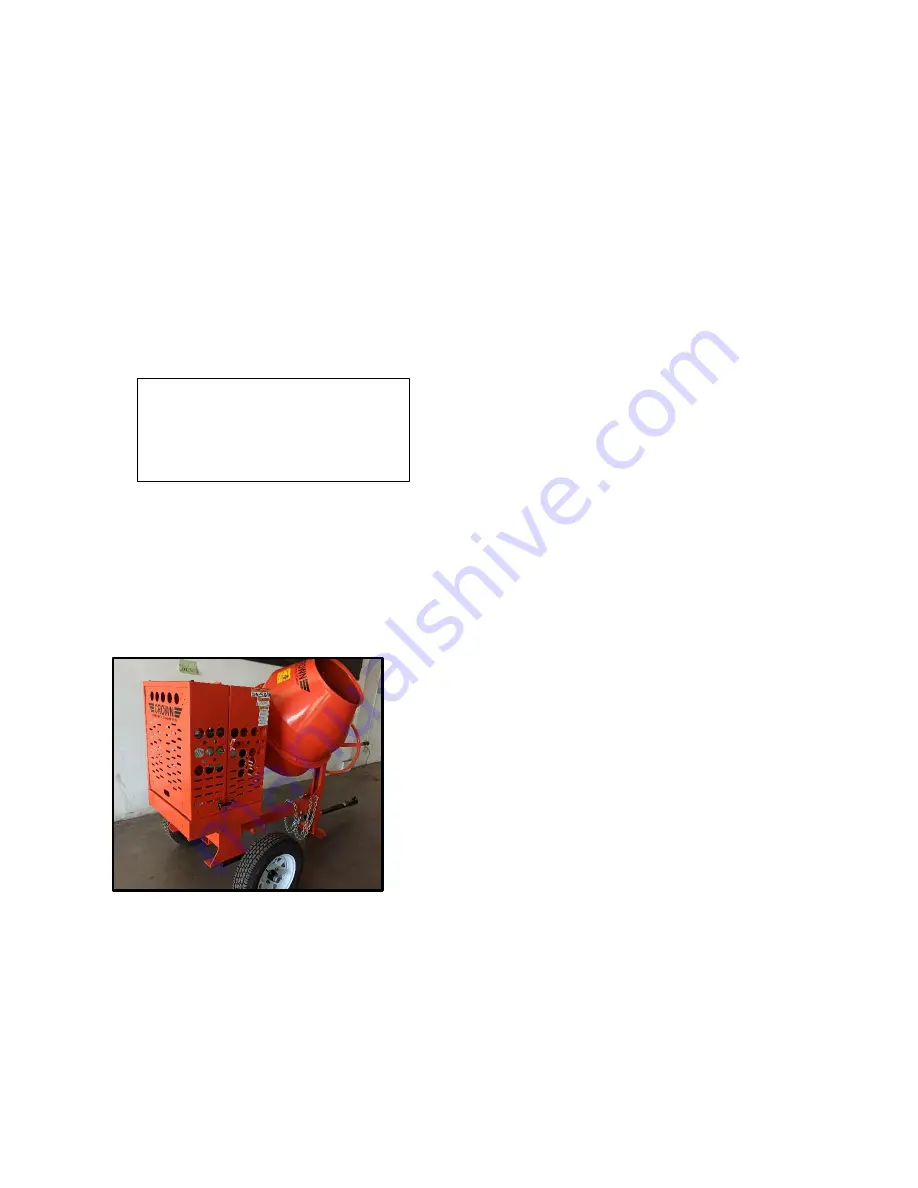
24
Filling:
When mixing concrete, follow this procedure:
a)
Clear the working area of unauthorized
personnel.
b)
Start mixer.
c)
Add half the required amount of water into the
mixing drum
d)
Add small amount of aggregate into the drum.
e)
Add the cement required for the batch.
f)
Add the rest of the water.
g)
Add the aggregate until the desired workability
is obtained.
h)
Mix until there is an even consistency
throughout the mixture. Look into the drum.
When the entire mixture is an even khaki green
color, the cement is evenly distributed
throughout the mixture.
i)
Slowly tilt the drum down to discharge the
mixture.
j)
Move the drum back into its mixing position
and immediately add half the water for the next
batch. This will help to keep the drum and
mixing paddles clean and prevent lumps from
forming in the concrete.
Mixing time:
After all the ingredients have been added to the drum,
allow time for the material to reach a uniform color and
consistency. Watch the color and consistency of mixture
as the drum is turning. When the entire mixture
becomes a deep khaki green color, it means cement is
uniformly distributed throughout the mixture and can be
discharged. If the mixture is not uniform, the concrete
will have weak spots.
Emptying drum:
All mixers are equipped with a lock for anchoring the
drum at a pre-determined angle. Move the wheelbarrow
or other concrete receiver up to the side of the mixer. To
empty the drum. Turn the tilt wheel to release the load
on the anchor pin. Pull and lift the anchor lock bracket to
release the lock. Use the tilt wheel to slowly lower the
drum into its discharge positon. Do not engage the
anchor lock unless the drum has stopped moving. Raise
the drum back into its mixing position and secure with
the lock after the drum has been emptied.
Cleaning:
Under normal operating conditions, adding water and
some aggregate to the drum immediately after emptying
will wash and clean the mixing paddles and inside of the
drum and keep them clean. If a slow build-up of residue
is occurring, add water and coarse aggregate to the
drum at the end of the of the working day and let it run
for minutes. If the coarse aggregate does not remove
the build-up, disable the machine by unplugging the
power cord or disconnecting the spark plug wire and
using a hammer and chisel to remove the lumps.
For the application (refer to table above in this case a
1:1:3 mix by volume is suitable.
Calculate the material required from the values in the
table.
Cement 18.5 x 6-1/2=120sacks
(13.5 x 8.5 = 115 sacks)
Sand 18.5 x 13 = 240.5 cu ft.-8.9
Cubic yards
(13.5 x 665-8842kg-6.5 cu meters)
Stone 18.5 x 19-1/2 = 360.75 cu ft. 13.4 cu. Yards
(13.5 x 1157 = 15620 kg 9.75 cu. Meters)
NOTE
Add aggregate a little at a time until
the desired consistency is obtained.
Emergency stop switch
















































